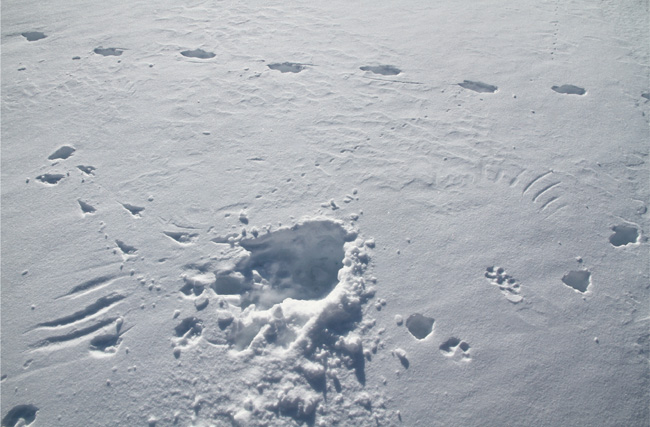
Most birds are active during the day, and we can easily observe their activities. Mammals are shyer; many of them can be seen only at dusk or at night. They do not wish to reveal their whereabouts except to fellow members of their species, but all animals leave tracks—a footprint, a lost feather, tooth marks on a tree, a hole in the ground, a special odor, and so forth. If you learn what to look for in animal tracks and can identify them, the time you spend in the field can become even more rewarding.
This book is a window into the rich variety of bird and mammal tracks and signs. Seen in the wild, they reveal a lot about animal behaviour. When trying to identify tracks, it is obviously helpful—as well as enriching—to know something about the animals themselves. For this reason, the second half of the book contains descriptions of most species of European mammals, their habits and habitats, as well as some facts about size, appearance, and distribution.
Animal tracks sometimes tell a story. This picture shows the tracks of several animals. A Willow Ptarmigan was surprised by a Golden Eagle, and the eagle was lucky; it managed to push the ptarmigan into the snow, drive its claws into its victim, and fly away with its prey. A Mountain Hare and a Norway Lemming went by, either shortly beforehand or shortly thereafter—perhaps they were witnesses to the scene. AK.
